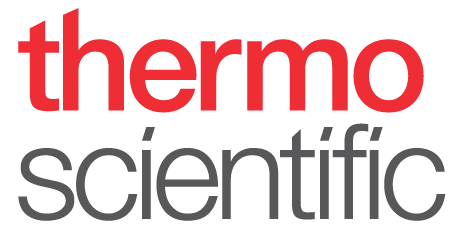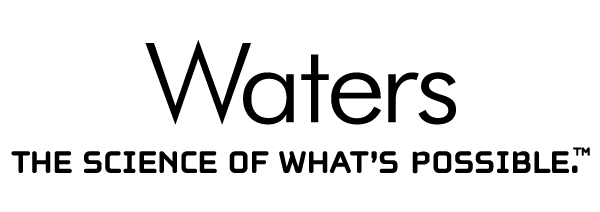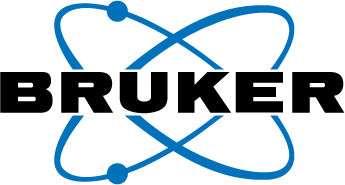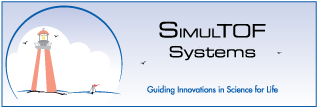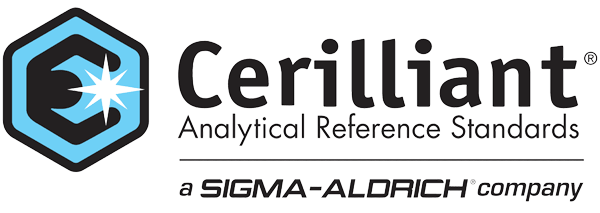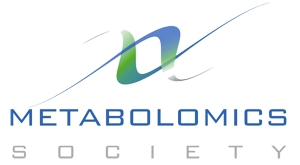MSACL 2014 USSan Diego, CA: March 1-5 |
Details
MSACL US
UNITED STATES 2014
Track 4: Newbies Only
An introduction to clinical Mass Spectrometry at the most basic level.
This track has been designed specifically for the clinical mass spec neophyte. Including basics of how to set-up a mass spec in your clinical lab, data handling, and primer sessions on small molecule, proteomic, metabolomic and microbiology clinical mass spec. This track is meant as a soft-landing for those with little or no clinical mass spec experience who are starting to realize the value this technology could bring into their laboratory.
Session 1: Basics: Setting Up a Clinical Lab | ||
| >> Monday 10:45 AM @ Marina 6 So You Want a Mass Spectrometer? Deborah French University of California San Francisco Use of liquid chromatography-mass spectrometry for analysis of small molecules in the clinical laboratory has increased in the past few years. Many labs have considered implementation of this technology, but some do not have enough experience to decide in which type of mass spectrometry system they should invest. This presentation will describe the basics of liquid chromatography, the types of mass spectrometer available and what type of analysis they are most suited to (quantitative versus qualitative), and the basics of return on investment calculations that may be required to justify a mass spectrometer purchase to laboratory administration. | ||
| >> Monday 11:10 AM @ Marina 6 Instrument Selection, Due Diligence, and Setting Up a Clinical Lab for Successful Implementation of MS Robert Fitzgerald UCSD After determining that your laboratory is ready to expand into clinical applications of mass spectrometry and determining what type mass spectrometer will be optimal for the work you propose, the next tasks are to select a vendor, make necessary modifications to your lab, perform instrument qualification, and begin validating clinical assays. This presentation will focus on our laboratories approach to performing due diligence and to setting up a laboratory to successfully implement clinical applications of mass spectrometry. | ||
| >> Monday 11:35 AM @ Marina 6 The MS Test Life Cycle Process: How to Keep Your Lab Moving Forward Paul Jannetto Mayo Clinic As more laboratories develop mass spectrometry-based tests, they need to have a standardized program to define, document, validate, and monitor laboratory-developed tests going forward to prepare for and meet the increased regulatory oversight. This presentation will describe the seven phases of a mass spectrometry test life cycle process at the Mayo Clinic which takes a laboratory-developed test from design, development, verification, validation, launch, and maintenance to retirement. It will also focus on the importance of post analytical monitoring and how proficiency testing programs can be used in combination with other assessments to monitor assay performance over time. | ||
Session 2: Basics: Standardization & Harmonization | ||
| >> Monday 3:00 PM @ Marina 6 CDC Efforts Towards the Development of a Reference Method for Measurement of 25-hydroxyvitamin D2 and 25-hydroxyvitamin D3 in Serum Ekaterina Mineva Centers for Disease Control and Prevention Vitamin D status is routinely assessed by measuring serum concentrations of the most stable and abundant vitamin D metabolites. To assure the accuracy of measurements and to harmonize laboratory results regardless of measurement procedure or location, worldwide standardization of 25-hydroxyvitamin D measurements is underway. Several JCTLM-recognized reference measurement systems have been established consisting of reference materials and methods. We are presenting key details from our new isotope dilution LC-MS/MS candidate reference method for measurement of 25-hydroxyvitamin D2 and 25-hydroxyvitamin D3 in serum. The method will be used to support standardization activities, including the CDC Vitamin D Standardization Certification Program. | ||
| >> Monday 3:25 PM @ Marina 6 An Update on Standardization Efforts for Steroid Hormones Hubert Vesper CDC Correct diagnosis and treatment of patients rely on accurate testing. Furthermore, the effective use of research findings in patient care and public health requires testing in research and patient care to be accurate and comparable. The CDC, together with the Partnership for the Accurate Testing of Hormones (PATH), is working to improve the accuracy and reliability of steroid hormone testing. In addition to its testosterone standardization program, CDC successfully conducts programs to standardize estradiol and vitamin D, and it works with PATH to develop new programs, promote accurate testing, and establish reference ranges. | ||
| >> Monday 3:50 PM @ Marina 6 Standardization of Immunosuppressant Drug Measurements Thomas Annesley University of Michigan The movement of LC–MS/MS into clinical laboratories has been accelerated by the need to monitor immunosuppressant drugs. The analytical sensitivity and specificity of LC-MS/MS allows laboratories to quantify cyclosporine, tacrolimus, sirolimus, everolimus and mycophenolic acid, often with multiple drugs quantified within a single run. Yet even for small drug molecules the path to standardization has not been easy, as shown by calibrator traceability studies, proficiency testing schemes and inter-laboratory comparisons. This presentation will cover the state of standardization of immunosuppressant quantification from the perspective of both immunoassay and LC-MS/MS, each of which has had challenges to success. | ||
Session 3: Basics: Implementing Small Molecule Assays | ||
| >> Tuesday 10:45 AM @ Marina 6 Vitamin D by LC-MS/MS: Practical Tips and Stories from the Front-Line Lorin Bachmann Virginia Commonwealth University Are you thinking of measuring a small molecule such as Vit D by mass spectrometry? Maybe you have an instrument and are wondering how to bridge the [large!] gap between installation and launching a validated method? Want some advice on how to deal with problems encountered along the way? This session is intended to provide practical advice, examples and first-hand accounts of experiences encountered during development, validation and on-going performance assessment of Vitamin D testing by LC-MS/MS. Method selection/development tips, validation design examples and troubleshooting case studies will be presented. | ||
| >> Tuesday 11:10 AM @ Marina 6 How to Make a Clinical LC-MS Testosterone Assay that Actually Works for Real Patients: Lessons Learned from the Front Lines Nigel Clarke Quest Diagnostics Nichols Institute This presentation will discuss the whole process of developing, validating and operationalising a Dx MS assay using an example testosterone assay currently being offered in our lab. Discussion of the approaches, instrumentation and methodologies for analysis of small molecules will be examined. Examples will be given of the sample preparation strategies, analysis modes and software options as well as how they behaved in our laboratory. | ||
| >> Tuesday 11:35 AM @ Marina 6 Development and Validation of Broad Spectrum Drug Screening Method on a Time-Of-Flight Mass Spectrometer Nandkishor Chindarkar University of California- San Diego Recent developments in the high resolution mass spectrometry have lead to instruments with improved sensitivity and specificity as compared with contemporary low resolution LC-MS/MS instruments. HRMS instruments have potential to be universal detectors for broad spectrum drug screening in clinical and toxicology laboratories. We investigated a panel of more than sixty compounds in urine with a dilute, hydrolyze, and shoot methodology using a TOF instrument. Qualitative results obtained by our method had very good correlation with those obtained by LC-MS/MS methods. We observed that the addition of a fragment ion was essential in eliminating false positive results. This report will outline the challenges faced during the method development for a broad spectrum drug screen using high resolution TOF MS. | ||
Session 4: Basics: Automating Data Exchange | ||
| >> Tuesday 3:00 PM @ Marina 6 Translating Between IT and MS Subcultures - An Overview of IT Technologies and Terminology Designed for Clinical Laboratory Personnel Tony DaSilva Kaiser Permanente In the quest to automate mass spectrometry instrument interfaces in the clinical laboratory, IT technologies play a critical role in the way disparate systems integrate. At play are a wide range of networking technologies, a dizzying array of communications protocols, laboratory information systems, middleware systems, and challenging instrument software systems. In most cases, laboratorians are the ones needing to orchestrate how all this technology must play together and to figure out what kind of assistance they need from their IT departments, vendors, and technical staff for a successful implementation. This presentation will provide laboratorians with the basic skills and understanding of the underlying IT technologies to effectively communicate with their technology providers. | ||
| >> Tuesday 3:25 PM @ Marina 6 A Road Map to Interfacing Your Mass Spectrometer Judy Stone CALM, Univ. of Calif., San Diego A barrier to implementing mass spectrometry (MS) in the clinical laboratory is the challenge of interfacing MS and automated sample preparation instruments to laboratory information systems (LIS) for electronic order and result transmission. This presentation will review basics of interface terminology, protocols, and workflows and will explain common differences encountered between interfacing mass spectrometers versus automated chemistry analyzers. Interfacing options now available from MS vendors will be discussed. Case histories will be used to illustrate recommendations to laboratorians for choosing between interface protocol options (.txt export, XML export, HL7), designing MS data storage architectures, selecting MS fields to export, interface testing and version control, and using middleware/LIS rules to automate data review. | ||
| >> Tuesday 3:50 PM @ Marina 6 Keeping Techs from Early Retirement: Approaches to Data Review in Multiplexed Mass Spectrometry Assays Jane Dickerson Seattle Children's Hospital Development of multiplexed mass spectrometry assays seems like every lab’s dream – however, increasing the number of analytes directly increases the complexity of the analysis. In an assay that measures 20 opioids and metabolites, there are nine metrics monitored for each of four sample preparation methods per analyte, totaling 720 data points per patient specimen. Without automated software tools, result preparation involved several manual processes and decision-making steps requiring extensive technologist time. Implementation of either custom or commercial software to perform quality control calculations reduces the amount of time required to manually review data, and ultimately, reduces the risk for errors. | ||
Session 5: Basics: Metabolomics | ||
| >> Wednesday 8:30 AM @ Marina 6 Experimental Designs for Metabolomics: Untargeted Does Not Mean Unplanned Gary Patti Washington University School of Medicine The purpose of this educational course is to discuss the basic principles that investigators new to metabolomics should consider when designing untargeted studies. Factors to be discussed will include sample choice for comparison, size of cohorts analyzed, instrument(s) applied, and public resources available for data processing. Special attention will be devoted to optimizing experimental design to answer specific types of scientific questions. A list of minimum criteria will be recommended that should be in place prior to analyzing clinical samples. Strategies to deal with the challenges of studying clinical laboratory samples will be discussed, such as sample normalization, sample handling, extraction procedures, biological variation, and sample heterogeneity. | ||
| >> Wednesday 8:55 AM @ Marina 6 Data Processing and Analysis for Metabolomics Gary Siuzdak Scripps Research Institute The purpose of this section of the metabolomic educational course is to discuss and demonstrate the basic principles behind metabolomic data processing and analysis. This presentation will cover how informatic technologies allow for metabolomic data processing, including automated feature detection, retention time correction, alignment of chromatograms, peak area calculations and, ultimately, statistical analysis and identification of significantly altered features. This presentation will be geared to the non-expert, providing an overview of the most straightforward approaches to performing mass spectrometry-based metabolomic experiments. | ||
| >> Wednesday 9:20 AM @ Marina 6 Applications of Metabolomics in Biomedical Research Caroline Johnson Scripps Research Institute In this course the utility of metabolomics will be discussed and its application to different areas of biomedical research. One of the major uses of metabolomics is biomarker discovery, which can help determine mechanisms of diseases; here their ultimate value in biomedical research will be discussed. Another topic introduced will be drug metabolism studies, which have heavily benefited from metabolomic analysis. Numerous novel metabolites and toxic modes of action have been discovered, and the emerging field of pharmacometabolomics can aid in predicting responders and non-responders. The course will end with a discussion on the integration of other –omic technologies with metabolomics, such as the rising field of metagenomics for correlating bacterial-conferred metabolic dysregulation with disease. This course is meant to introduce the non-expert to potential applications of the field. | ||
Session 6: Basics: Proteomics | ||
| >> Wednesday 10:45 AM @ Marina 6 De novo Biomarker Development: Learning the Ropes: Part 1 Jennifer Van Eyk Cedar Sinai Medical Center There is a need to develop new biomarkers to provide quantitative and actionable information essential for good clinical decisions. This information can aid in screening, prognosis, diagnosis and for therapeutic monitoring or improving the cost effectiveness of providing healthcare. The technologies involved in developing new markers are generic but unique characteristics of the targeted clinical area impacts the development strategy. Overall, the biomarker development process consists of multiple steps, each increasing the probability of producing clinically useful assays. This session provides insight into the strategies for discovery to increase the probability of ultimate success and outline traditional and emerging approaches for validation to hone the panel. Finally, an expert panel will discuss the challenges and obstacles in the transition of new markers to clinical practice. | ||
| >> Wednesday 11:10 AM @ Marina 6 Biomarker Development: Learning the Ropes: Validation: Part 2 Dawn Chen Quest Diagnostics Nichols Institute Validation of candidate biomarkers requires moving to a quantitative assay able to assess increasingly large number of samples. Traditionally, this has involved ELISA assays, which uses antibodies to different epitopes but which can be influenced (low sensitivity/specificity) by a number of factors including cross reactivity and interferences from the matrix or analyte. Recent developments in protein-based mass spectrometry methods with respect to sample preparation and instrumentation allows for absolute quantification of an analyte based on accurate measurement of representative and unique peptides. These targeted MS methods, called multiplex or selective reaction monitoring (MRM or SRM, respectively) can produce equivalent data to an ELISA. MRM assays have additional advantages with respect to multiplexing and quantification of disease-induced post-translational modifications. | ||
| >> Wednesday 11:35 AM @ Marina 6 Expert Panel Discussion: Learning the Ropes: Part 3 Ian Wright Advanced Clinical Biosystems Institute There is a need to develop new biomarkers to provide quantitative and actionable information. The technical ability and strategic approach on how to move from discovery through validation has been developing over recent years. Mass spectrometry has been central to this. The next stage is to move these new assays into clinical realm. This session will be a panel discussion with Shijun (Simon) Sheng (Senior application scientist, Thermo), Cory Bystrom (Director, Research and Development, Cleveland Heart Lab) and Ian Wright (ACBI ). Their experience with IVD and MS manufacturers as well as their interaction with academic and clinical labs will provide insight into the various aspects involved. They will highlight the challenges and successes of using MS- based methods for accurate quantification. A vision for the diagnostic industry and MRM assays will be discussed. | ||
Session 7: Basics: Microbiology | ||
| >> Wednesday 2:30 PM @ Marina 6 MALDI-TOF 101 for Microorganism Identification Morgan A. Pence Washington University in St. Louis Matrix-assisted laser desorption/ionization time-of-flight mass spectrometry (MALDI-TOF MS) is an emerging diagnostic tool in the clinical microbiology laboratory. MALDI-TOF MS provides identification of microorganisms within minutes, decreasing turnaround time compared to conventional phenotypic methods, and has been shown to be reliable and cost effective. The method generates a spectrum, or “fingerprint,” of ribosomal proteins, which is compared against a reference database to assign an identification and confidence value to the organism. This session will focus on the basics of MALDI-TOF MS in the clinical microbiology laboratory and discuss the two platforms that currently exist, the Bruker Biotyper and bioMérieux’s VITEK MS. | ||
| >> Wednesday 2:55 PM @ Marina 6 MALDI-ToF-MS for Mycobacteria & Mold Susan Butler-Wu University of Washington The use of MALDI-ToF-MS for the identification of routine bacterial isolates in the clinical microbiology laboratory is becoming increasingly commonplace. Similarly, there is a large body of published literature describing the performance of this method for these organisms. However, the application of MALDI-ToF-MS to mycobacteria and mold species poses unique challenges such as the need for initial extraction, safety considerations and database composition. In this session, we will review published extraction methods as well as the performance of both commercial MALDI-ToF-MS systems for these organisms. The practicalities of implementing MALDI-ToF-MS for mycobacteria and mold identification will also be discussed. | ||
| >> Wednesday 3:20 PM @ Marina 6 Advanced Applications for MALDI-TOF MS in Clinical Microbiology Christopher Doern Virginia Commonwealth University Medical Center This educational session will focus on advanced applications of matrix assisted laser desorption/ionization time-of-flight mass spectrometry (MALDI-TOF MS) as they pertain to the diagnosis of infectious diseases. Three primary topics will be discussed: 1) the use of MALDI-TOF MS for the detection of beta-lactamases and other resistance determinants, 2) phylogenetic typing of bacterial organisms, 3) direct identification of organisms from positive blood cultures and patient specimen. The educational session will focus on describing the methods used in these techniques as well as reviewing the literature that addresses their performance. | ||


